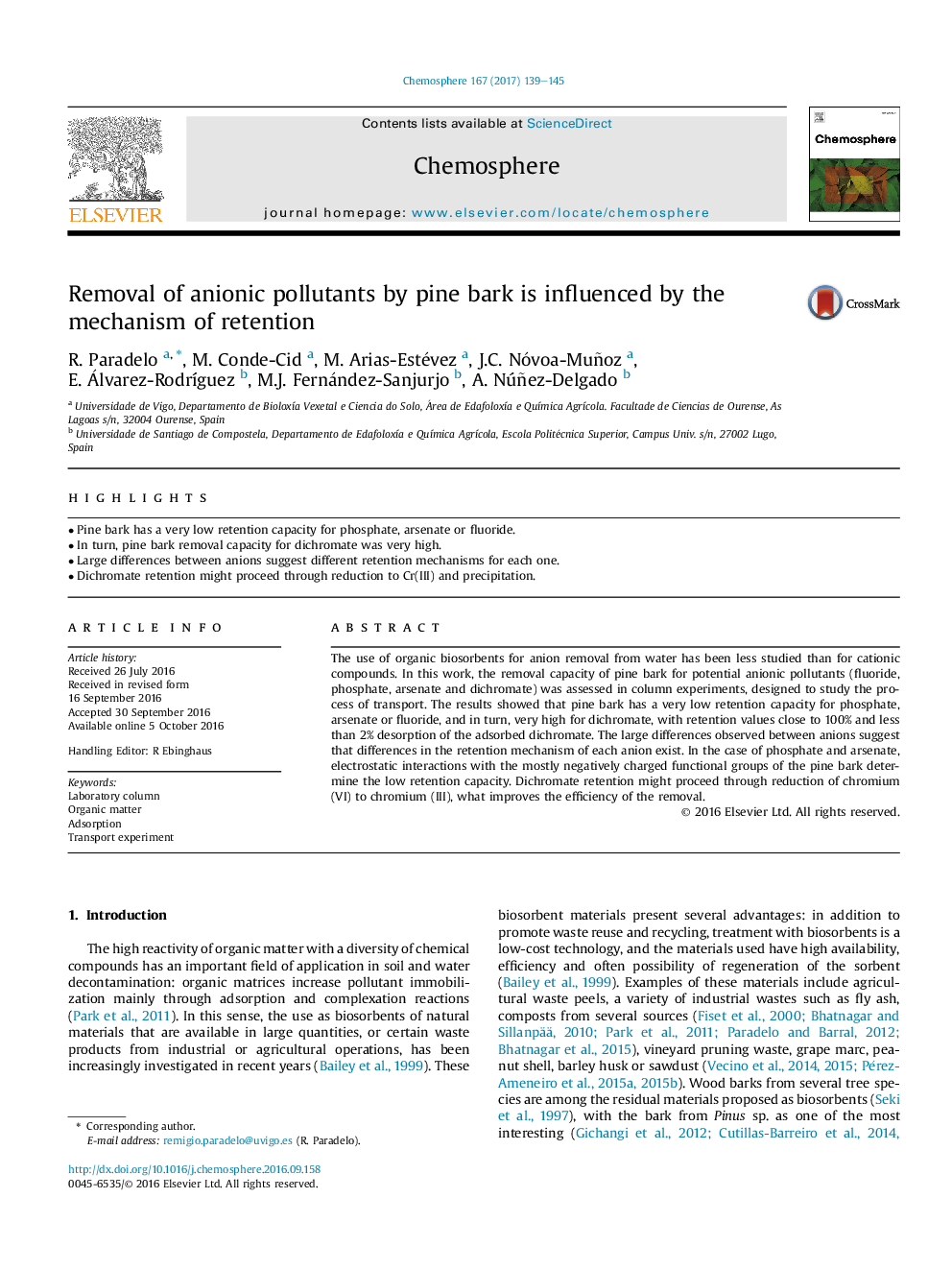| کد مقاله | کد نشریه | سال انتشار | مقاله انگلیسی | نسخه تمام متن |
|---|---|---|---|---|
| 6305892 | 1618804 | 2017 | 7 صفحه PDF | دانلود رایگان |
- Pine bark has a very low retention capacity for phosphate, arsenate or fluoride.
- In turn, pine bark removal capacity for dichromate was very high.
- Large differences between anions suggest different retention mechanisms for each one.
- Dichromate retention might proceed through reduction to Cr(III) and precipitation.
The use of organic biosorbents for anion removal from water has been less studied than for cationic compounds. In this work, the removal capacity of pine bark for potential anionic pollutants (fluoride, phosphate, arsenate and dichromate) was assessed in column experiments, designed to study the process of transport. The results showed that pine bark has a very low retention capacity for phosphate, arsenate or fluoride, and in turn, very high for dichromate, with retention values close to 100% and less than 2% desorption of the adsorbed dichromate. The large differences observed between anions suggest that differences in the retention mechanism of each anion exist. In the case of phosphate and arsenate, electrostatic interactions with the mostly negatively charged functional groups of the pine bark determine the low retention capacity. Dichromate retention might proceed through reduction of chromium (VI) to chromium (III), what improves the efficiency of the removal.
Journal: Chemosphere - Volume 167, January 2017, Pages 139-145
